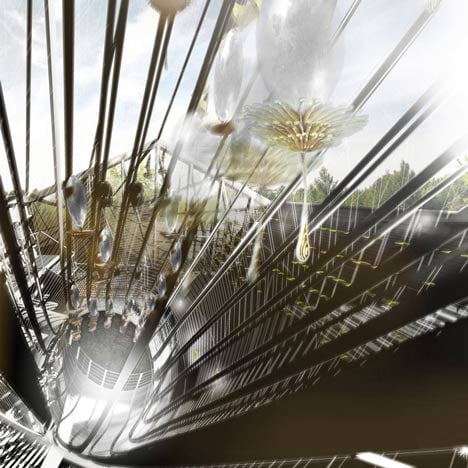
London Without Bees by Ben Kirk
Architecture student Ben Kirk has designed conceptual towers to replace the fast-declining bee population by shooting artificial pollinators into the air.
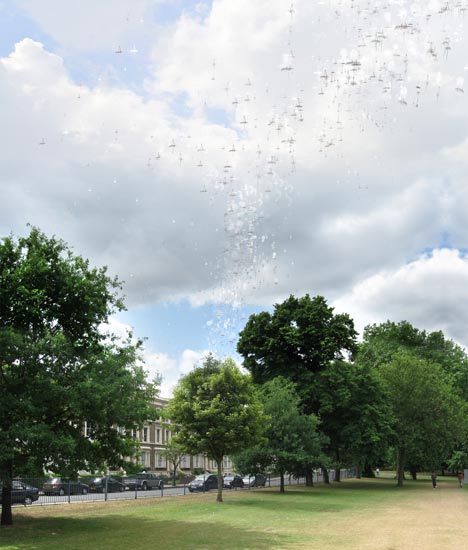
Above: main pollinator release point in Kew Gardens
Located in Kew Gardens, a tower would fire spores covered in pollen-filled latex balloons into the air so the wind could transport them to parks across London.

Above: detail of artificial pollinators
City-wide recycling buildings would suck up unused pollen spores and redistribute them via a trumpet-like funnel.
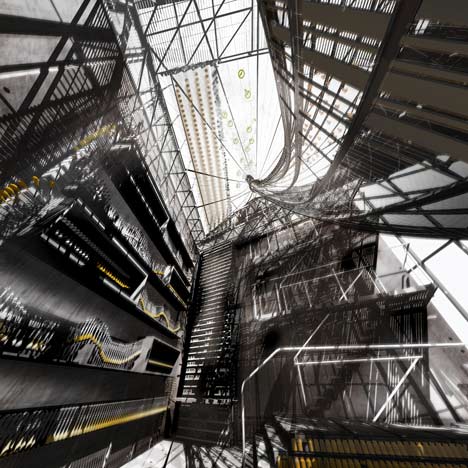
Above: satellite pollinator release facility in Victoria Park
Additional off-the-shelf Garden Pollination Devices with acetate tentacles would also available for private gardens.

Above: satellite pollinator release facility in Victoria Park
Kirk developed the project while studying at the University of Westminster.
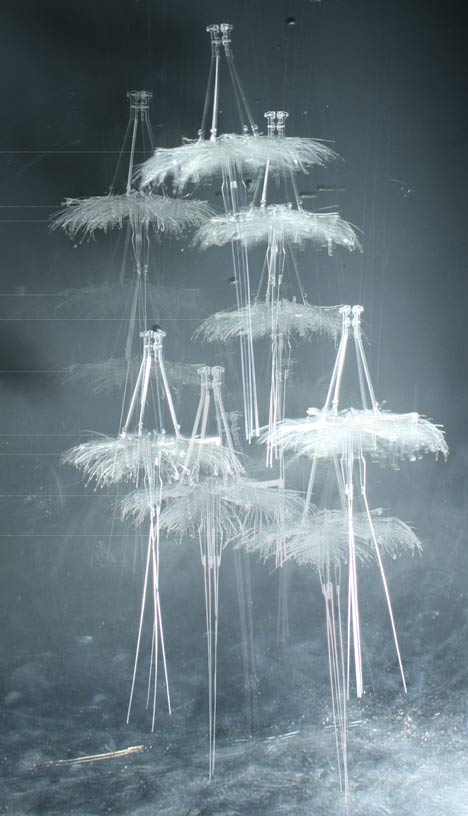
Above: garden pollination devices
More student projects on Dezeen »
Here are some more details from Kirk:
London Without Bees: architecture to pollinate a wilting city
What would happen if, as the worst predictions suggest, there were no bees in London? How would flowers be pollinated?
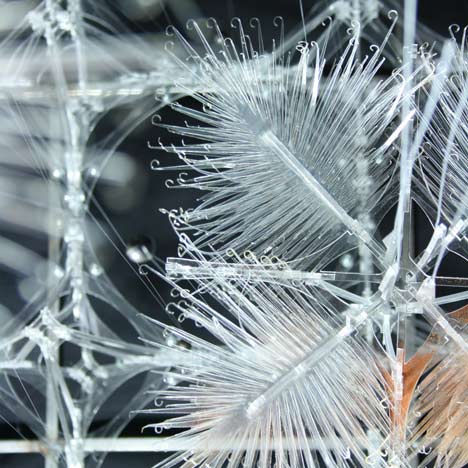
Above: detail of garden pollination devices
Here a headquarters in Kew Gardens releases millions of delicate floating inseminators, like artificial spores, across the city. Locally, in places like Victoria Park in Hackney, small repair and collection points work constantly to recycle the proxy bees: architecture to pollinate a wilting city.
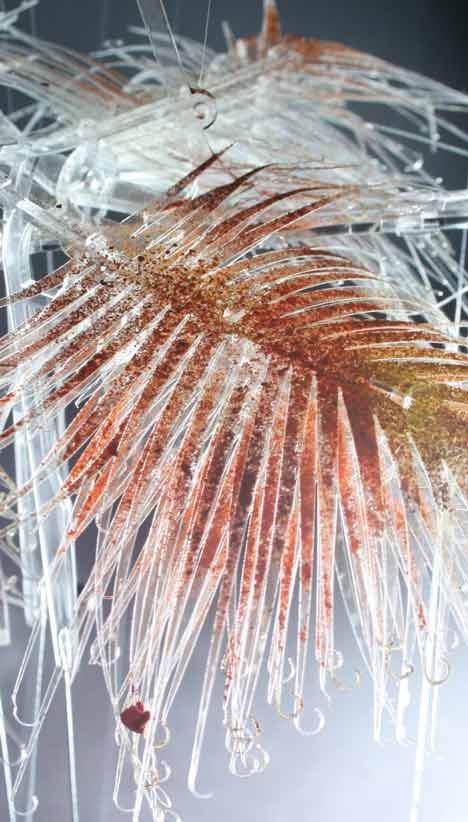
Above: detail of garden pollination devices
Without the common honeybee, London's gardens would be unrecognisable. We would miss their familiar buzz on a summers day, we would miss their delicious honey. Less obviously, we would miss their pollination, which allows plants to reproduce and flower in such vivid colours.
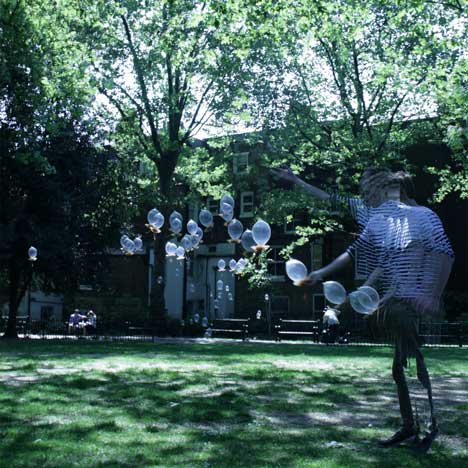
Above: prototypes of artificial pollinators
The honeybee's form is no accident. She is a conspiracy of the pollen bearing plant world, her architecture so specific to the task.

Above: prototype of artificial pollinators
In response to the honeybee's extinction, man must conceive a way to pollinate London's parks and gardens, learning from her specficity through biomimicry.
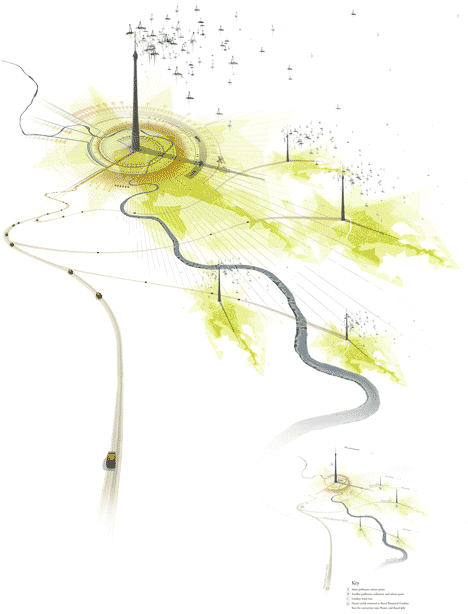
Click above for larger image
Firstly the 'Garden Pollination Device' fertilises London's back gardens, shimmering like a garden chandelier as the light passes through the statically-charged perspex and acetate covered in pollen. It is designed as a flat pack product available off-the-shelf which the garden enthusiast can assemble themselves. It is suspended from the four corners of the typical London terrace back garden with tension wires, with the device hung in the middle, and predominantly relies on passive wind movement, and the vertical movement of the counter-weighted acetate tentacles, to accidentally brush past the anthers of one garden flower onto anothers stigma.
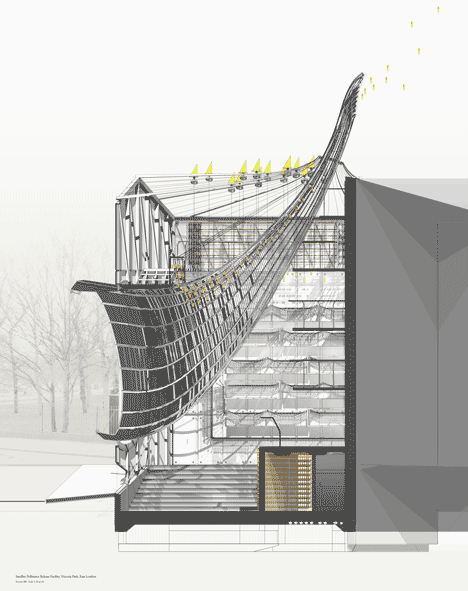
Click above for larger image
Following this, a London-Wide Pollination Strategy is conceived, with delicate latex pollination devices projected into the London skies from a headquarters in Kew Gardens, and carried by the prevailing wind to the required destination.
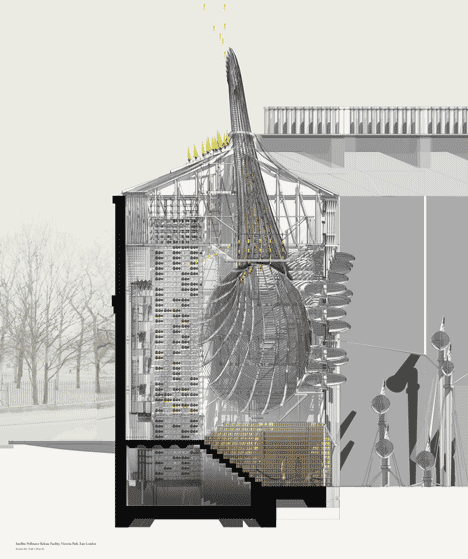
Click above for larger image
Once the pollination is complete, the proxy bees are recycled at local 'Satellite Pollinator Release Facilities' which strategically proliferate London.

Click above for larger image
These 'Release Facilities' act both as workshops to recycle and reproduce the latex pollinators, and as a wind harvester, increasing the flow of air through the main funnel. This is achieved via side injection wind inlets and garden wind cowls, in order to project the proxy bees into the skies.
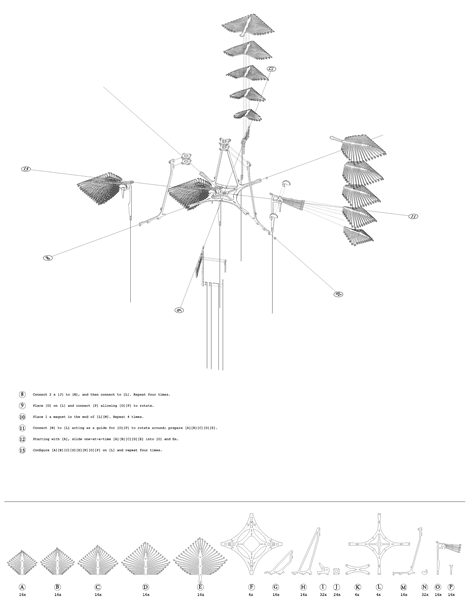
Click above for larger image
Intentionally prosaic in external appearance, the facility in Victoria Park seamlessly merges into the urban fabric, its simple copper mesh cladding enveloping the workshop. Internally, the facility reveals a magical full height workshop with the spectacle of the 'release' seducing the visitor.
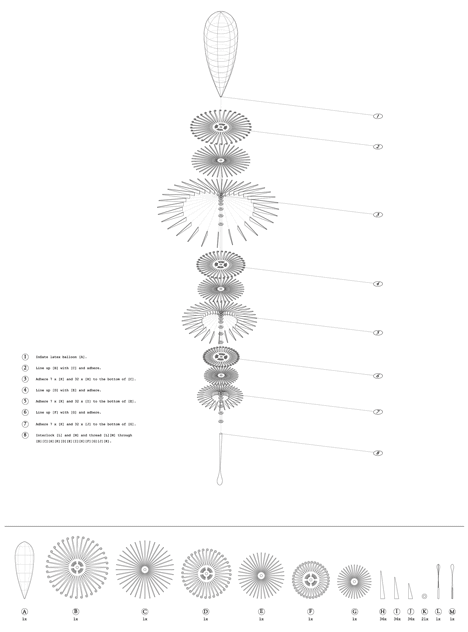
Click above for larger image